THIS NOT-SO-IMPOSSIBLE MACHETE DELIVERS
Condor Tool & Knife is known for making old-timey patterns like period-piece tomahawks, Hudson Bay axes, and knives in the Kephart and Nessmuk styles. The company produces many new designs, too. With products manufactured in El Salvador, Condor Tool & Knife started on the knife scene making machetes, and seems to do that best. Its latest offering is a modern take on the time-tested Malaysian parang, with a few changes.
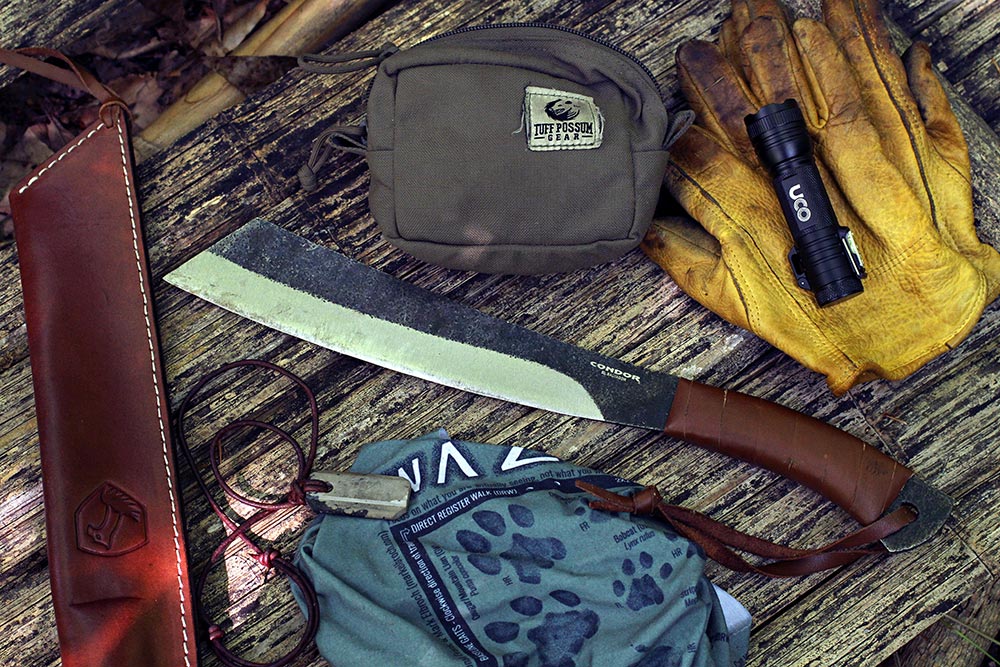
PARANG STYLE
Condor Tool & Knife makes several versions of parangs whose designs originate from Malaysia. The Impossible Machete is thinner than the company’s parangs: 0.20 inches thick (5.0 mm), with a shorter blade than most, measuring 10.89 inches. The overall length is 16.71 inches. The classic forged finish and leather-wrapped handle give it a rustic look that would make you think it came out of the Rambo IV prop shop.
The Impossible’s weight is approximately 23 ounces, and the steel is the Condor Tool & Knife standard: 1075 high-carbon steel with a convex grind. An attractive welted-leather, handcrafted sheath completes the package.
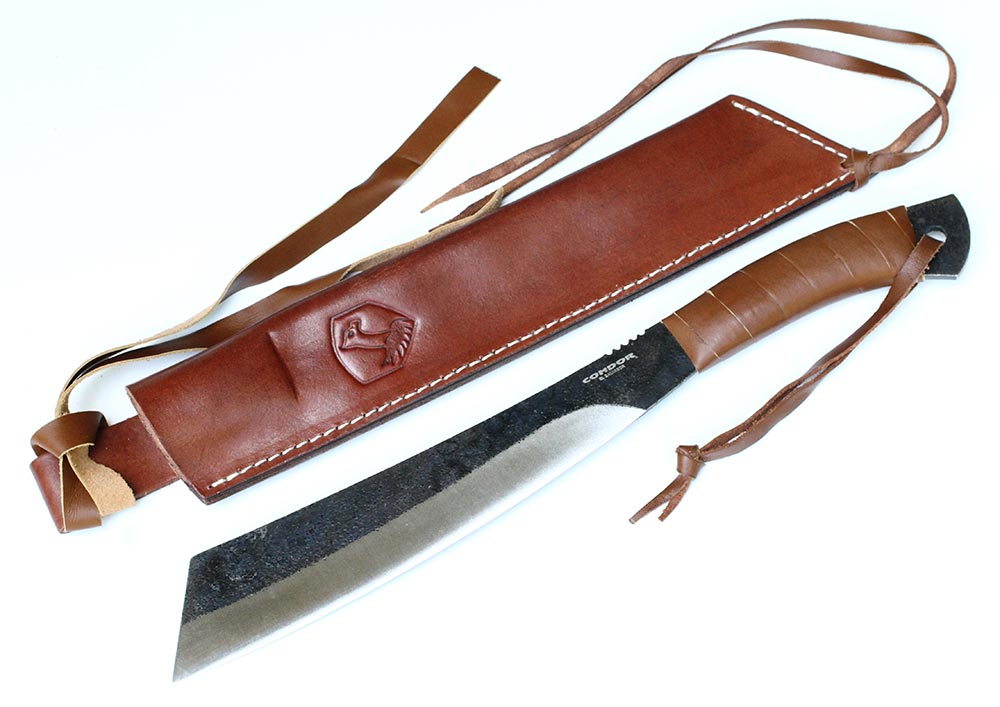
MAKING THE CUT
Although this is not an authentic parang, it delivers similarly, except for the handle. First of all, the handle is comfortable in the regular grip because the leather is flat and doesn’t bite into the hand like cord-wrapped handles will. Like an actual parang, the exposed tang (past the leather) prevents gripping way back on the knife handle for more reach and leverage because the metal bites into the fingers. It’s best to use the knife where it’s most comfortable and keep your hand on the leather.
First, I have to commend the people at Condor Tool & Knife for their decision to fit the Impossible Machete with a convex grind, not a flat or hollow grind like many companies that make parang-shaped blades. Authentic chopping tools like axes, hatchets, tomahawks and most large choppers have a convex grind. This makes the edge not only resilient but also reduces the chances of the blade sticking in wood.
“The Impossible Machete’s forte was chopping finger- to broomstick-thick green wood for stakes, grills and other crafts.”
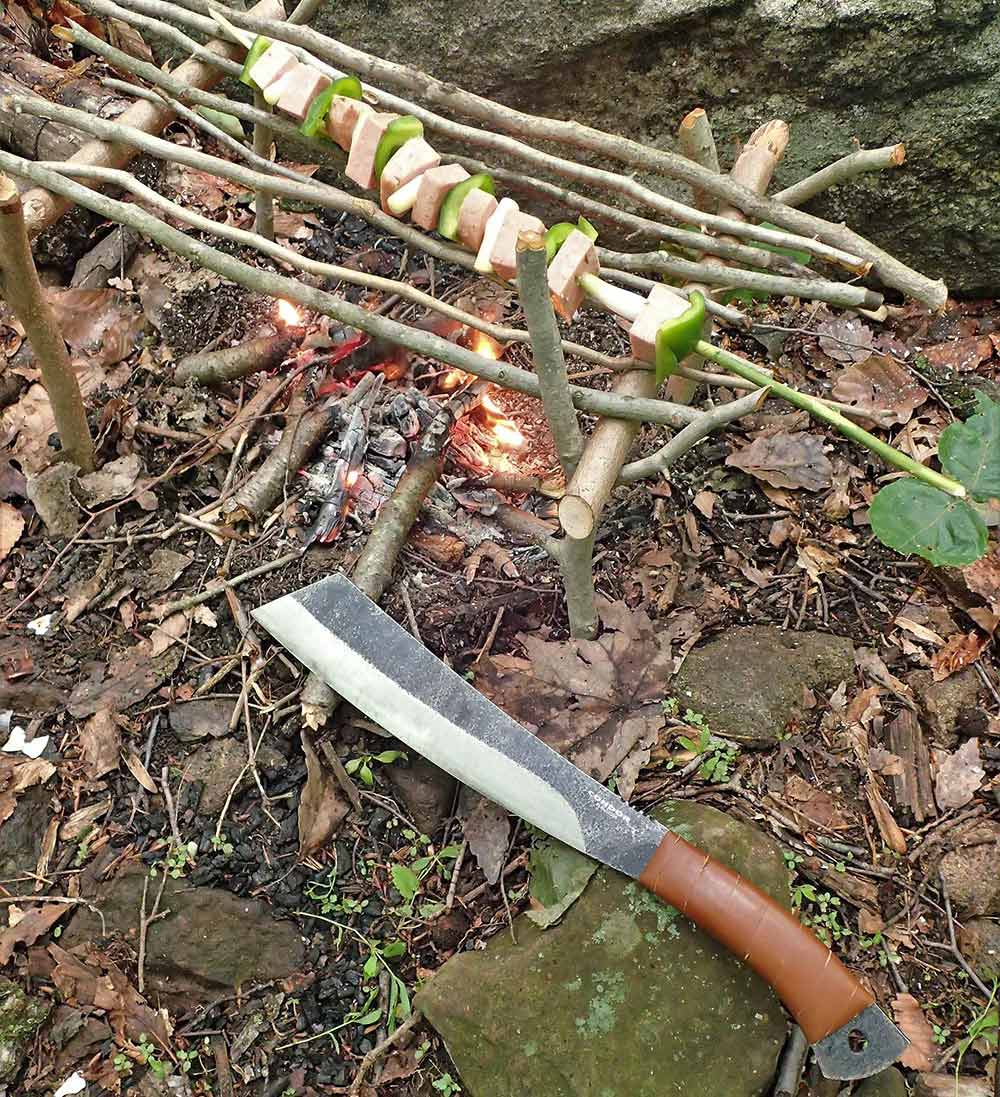
Even a somewhat thinner blade with a convex grind will stick less than if it had a flat or hollow grind. This was apparent when I went to town chopping on a maple downed by heavy storms. The blade bit deep and never got stuck. Chopping in a “V” formation produced large wood chips, yet none on the blade. I chopped through wrist-thick maple, and to be quite honest, in a camping and survival situation, anything more significant in diameter is thrown on the fire and called fuel. Pole beds, ridge poles, fire reflectors and firewood need not exceed the wrist/forearm-thickness rule. As expected, the smaller, finger-thick branches came off cleanly with one or two chops.
The Impossible Machete’s forte was chopping finger- to broomstick-thick green wood for stakes, grills and other crafts. One project in particular was a swamp grill based on the jungle swamp-bed design. Several years ago, I learned how to make this structure and stay off the wet, creepy-crawler ground in the Amazon rainforest. This structure seems as versatile as a long blade, suitable for creating a table, bench, bed and cooking grill. I used a blown-over tree and harvested with the Impossible Machete as many green branches as
I could for crafts and future projects.
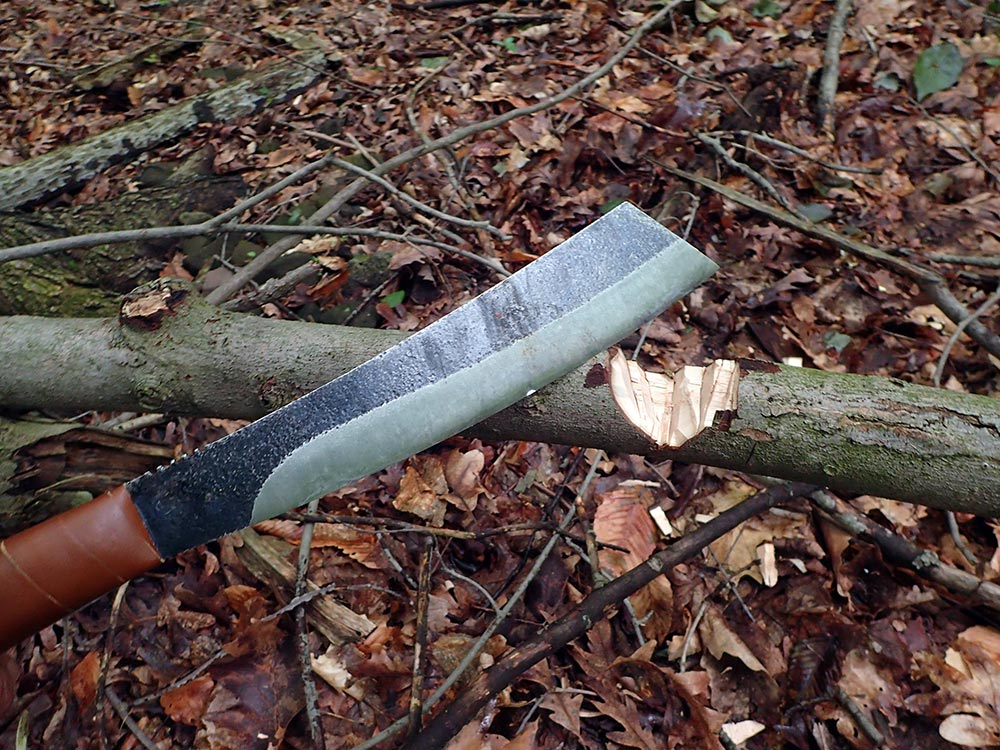
This project required four Y-forked branches. These pieces needed to be the thickest. Two cross bars at either end were required, and several pinky-finger-thick branches were needed for the grill top. All the pieces were cut at a steep angle with one or two chops. I don’t put sharp ends on sticks going into the ground; given how hard it is, I simply chop at approximately a 30-degree angle and call it good.
The all-important pilot stick was vital for the success of getting the Y-sticks in the hard ground. A pilot stick is simply the brute force stake that gets hammered in the ground to make a pre-hole, so there is minimal hammering on the Y-sticks. I like to use whatever dead sticks I can find for a pilot stick. I chop a chisel on one end and a slightly rounded top-end for hammering. The weight of the Impossible Machete was sufficient to get the pilot stick started, and then a large baton finished the job. It’s essential to start the cook fire with the grill pieces off until the fire dies down to a low flame and coals.
FIRE AND THE HEMLOCK
Getting a cookfire going is half the fun for me in the outdoors. I processed wood as I would with any big blade, batoning to split rather than trying to stand up the wood vertically and chop through. Using the baton method is safer and more precise. The wedging or displacing of material effect from the convex helped compensate for the lack of weight and thickness used to split wood.
The Impossible Machete efficiently handled splitting all the way down to kindling thickness—only tinder was needed. Like a true parang, the widest portion of the tool is towards the tip, giving it that weight-forward feel. This area is great for grasping the spine and handle to use as a drawknife. I made a pile of shavings out of a dead poplar branch leaning against a tree at a 45-degree angle. The Impossible Machete performed this task well, and the convex edge bit the branch nicely, allowing for smooth, curly shavings with minimal effort.
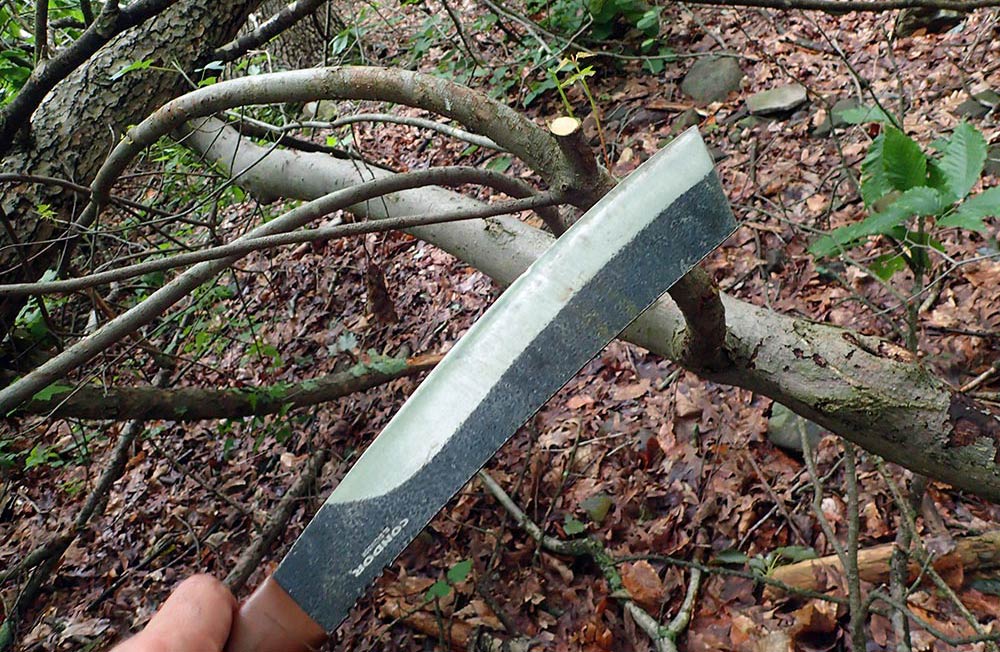
The Impossible Machete has a robust and sharp point good for drilling and incising. The type of tip a parang has, if any, is not made for stabbing as much as it is for chopping bamboo parallel to create splits, opening it up to make walls, mats and tabletops. Being far from bamboo, I replicated this task on a downed hemlock tree that had blown over in a storm. I drove the tip into the bark repeatedly with a few wrist flicks, just as I would if I were driving it into bamboo. The chops were quick and short, allowing the tip to penetrate only about half an inch. I also took the liberty to make a few harder chops with the tip to see how it would do; no damage done.
“It sounded like I hit steel and the blade got its first battle scar; it was dinged.”
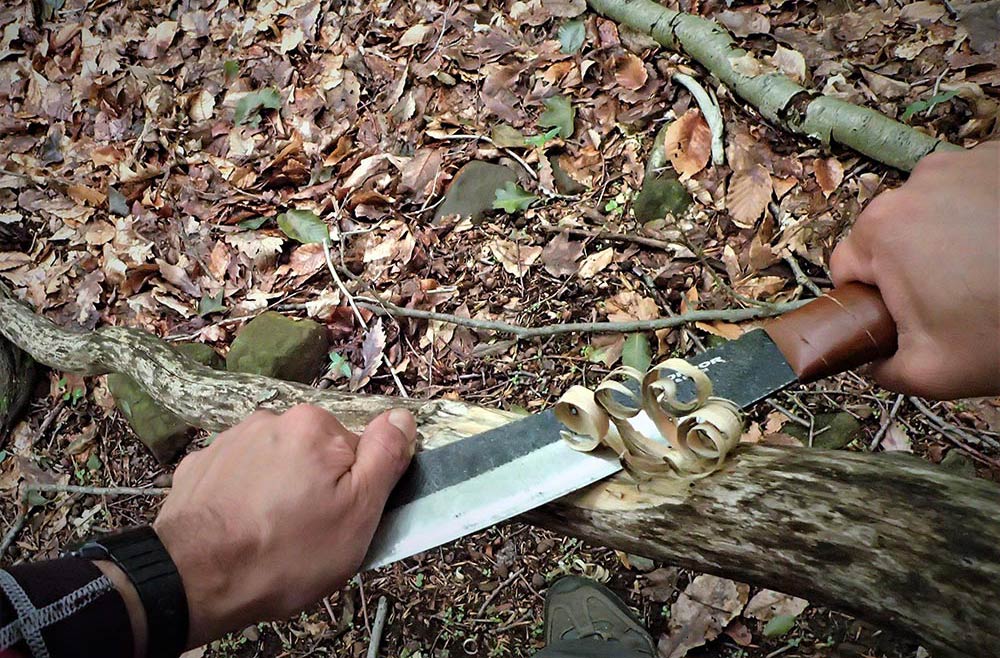
Then it came time for the deadwood branches; I wanted to see if there would be any damage chopping at the base where the branches offer more resistance and can be very hard. I remember reading very old books about how hard hemlock knots were and how they could feel and sound like chopping glass with an axe. These knots were said to be damaging to an axe and should be avoided if possible.
I learned firsthand how accurate these warnings were when the Impossible Machete struck one. It sounded like I hit steel and the blade got its first battle scar; it was dinged. Nothing too bad, and it didn’t chip; it just looked like I chopped into a metal fence post. Next time, I’ll turn the blade over and use the spine to knock off those knots. Those old timers were correct!
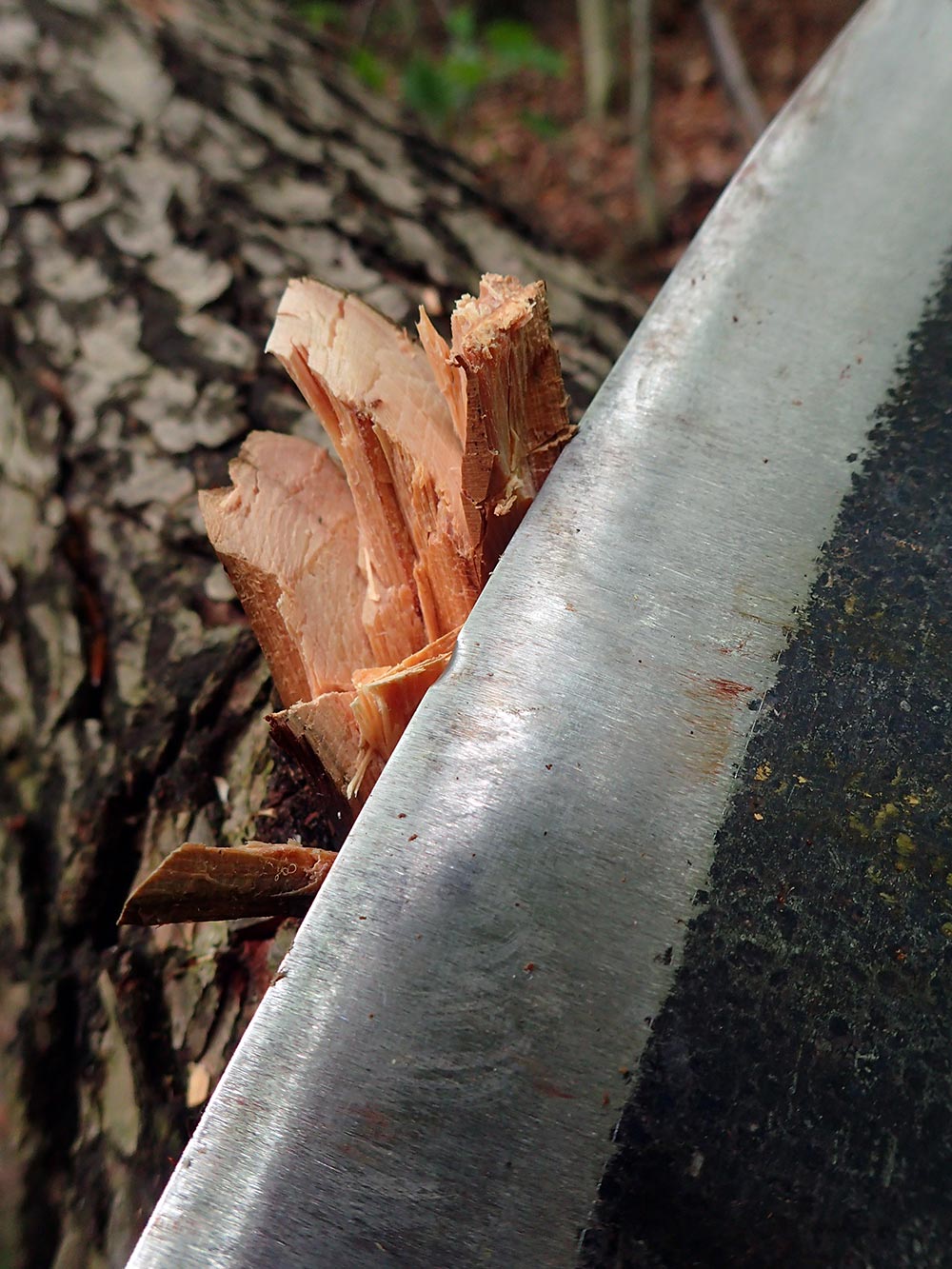
MISSION POSSIBLE
Condor Tool & Knife created a perfect combination between portability and weight for rough uses on outdoor expeditions or in the thick forest. The Impossible Machete would be an excellent addition to any camp or survival scenario. I would like to see this model offered in a 12- to 14-inch blade option—they could call it the Unbelievable Machete.
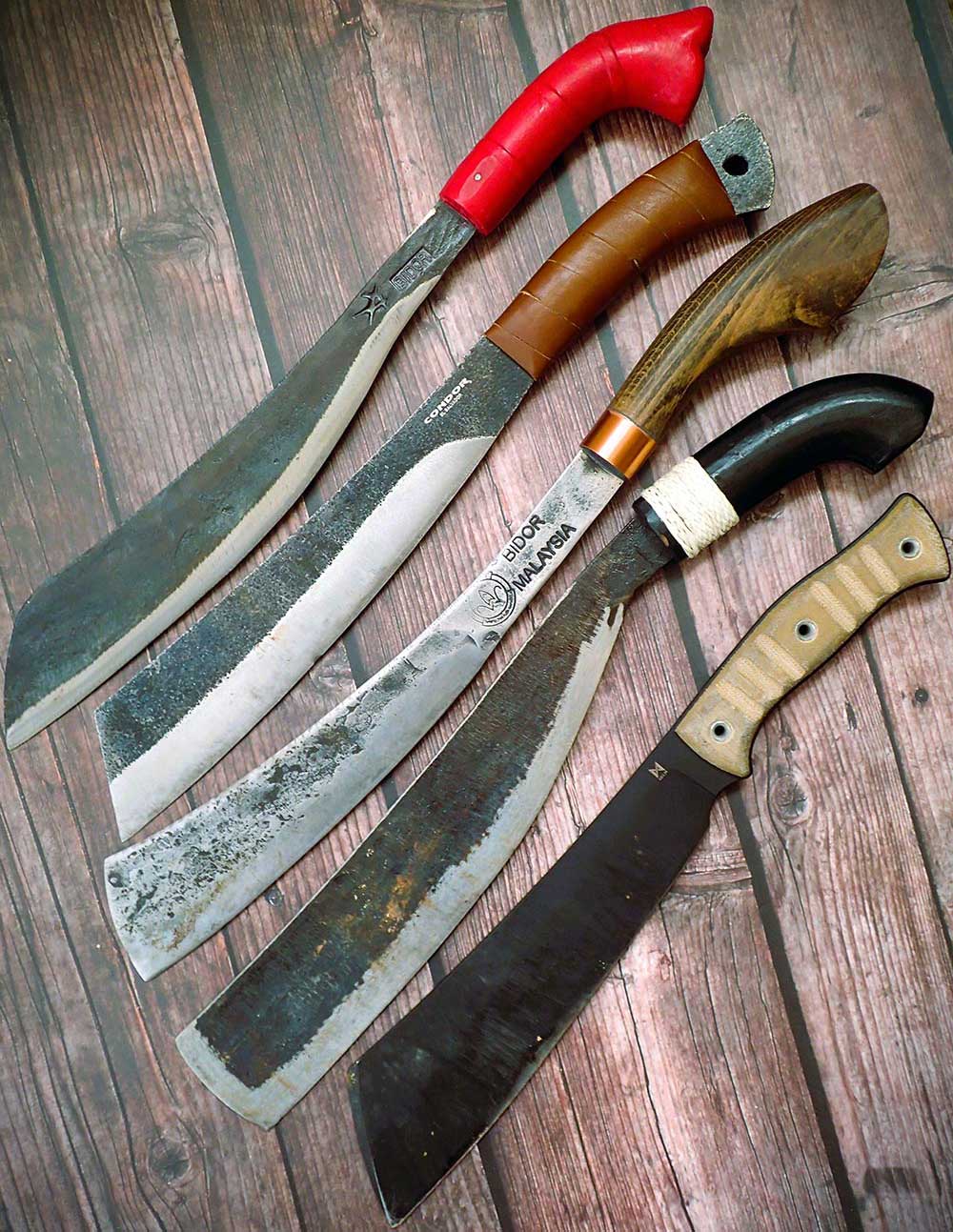
SPECS
Condor Tool & Knife Impossible Machete
Blade: 10.89 inches (276.5 mm)
Overall Length: 16.71 inches (424.2 mm)
Thickness: 0.20 inches (5.0 mm)
Weight: 22.93 ounces (650.0 g)
Material: 1075 High Carbon Steel
Finish: Condor Classic
Grind: Convex
Handle: Hardwood with Leather Wrapped
Sheath: Hand Crafted Welted Leather
Origin: El Salvador
SOURCE
Condor Tool & Knife
www.CondorTK.com

